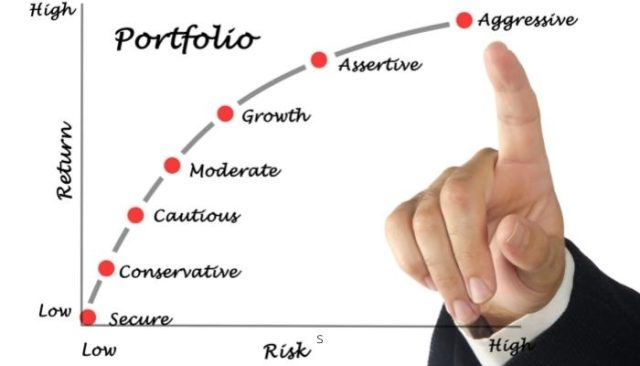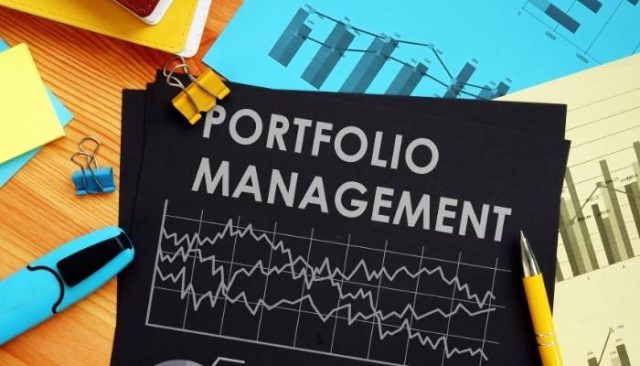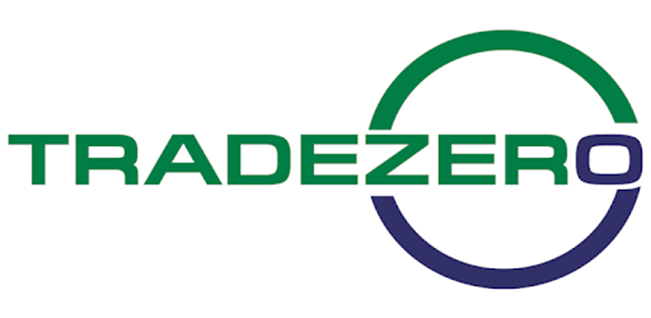What Is A Trading Portfolio – An Expert’s Take 2024
By Jordan Blake
January 10, 2024 • Fact checked by Dumb Little Man

A trading portfolio is among the strategic ways you can explore to get the best out of trading and investments. Experts recommend that a trader is best described by the type of portfolio they hold.
In this post, we’ll go over the term – Trading Portfolio in fine detail. And since our focus here is on sharing the best actionable and insightful information, we‘ve requested the expertise of Ezekiel Chew.
Ezekiel is an expert trader – having an experience of more than twenty years of trading the various financial markets. As a way of giving back to society, he gives back to society by sharing his knowledge with trader trainees.
Plus, you can find tonnes of information via discussion panels where he sits. Or on his website – Asia Forex Mentor.
In line with the purpose of this post, you’ll get to know more about trading portfolios. Specifically, we’ll cover each of the five types there are out there. There’s an exclusive section discussing the diversified portfolio.
We’ll cover four key areas to do with trade portfolios. The first is asset allocation, and the second is risk reduction. On the third and fourth slots, we’ll share notes on portfolio management and monitoring in that order.
Towards the end, there’s a final thoughts section, which culminates with the FAQs – in anticipation of a few relevant questions pertaining to trading portfolios.
What is a Trading Portfolio?

A trading or investment portfolio is simply a collection of assets. And being a collection of assets, an investment portfolio is usually a deliberate effort – bringing together carefully picked feature assets from an asset class.
For example, it can comprise ETFs or Exchange-traded funds, bonds, mutual funds, as well as cash and cash equivalents.
One crucial thing with a trading or investment portfolio is giving traders a summary or dashboard view. With the view at a glance, traders are able to monitor and hence, make better decisions.
Of course, the brainstorms with trading portfolios are best aligned with reassessments of the financial targets of the decision makers or stakeholders.
With an investment portfolio, a money manager can work with one or multiple portfolios. However, it’s best to make the decision regarding that based on three key aspects: your asset classes, risk tolerance, investment goals, and strategies.
5 Types of Trading Portfolios

We acknowledge that there are many types into which investment portfolios can be classified. Majorly, these categories are guided by the approach that traders use in approaching investments.
For this post, we’ll limit our discourse to five of the most prominent types of trading portfolios:
#1. Aggressive Portfolio
Aggressive portfolios, as the naming implies, are a category in which traders take on high-risk investments. In other words, it's a category with very levels of risk tolerance.
The enticing character of traders with high-risk tolerance rates is the equally high rewards. And most traders whose aggressive portfolio category place relatively high allocations of assets to corresponding highly risky industries spread across the financial markets.
Normally the assets within portfolios that are aggressive are simply very unstable. The other
Being risky assets, the investors who hold them have targets that are in tandem with making loads of profits within very short periods. One good example of highly risky investments that fall within aggressive portfolios is growth stocks, cryptocurrencies, and other digital assets like tokens running on blockchains.
One other category where aggressive investors fit in perfectly is businesses that are just coming up. With a unique approach, aggressive investors target to ride the potentials – especially those that promise rapid growth in the markets. Most technology investments fall within this category.
Experts will guide that the most crucial skill in the aggressive portfolio is the management of risks. And generally, the path to maintaining the portfolios is cutting losses at the earliest chance and taking maximum profits from winning positions
#2. Defensive Portfolio
As the name suggests, the defensive portfolio comprises a huge portion of defensive stocks. In better words, defensive stocks are characterized by solid protection from huge swings in prices arising from volatility.
Defensive stocks are also known by another term – the non-cyclical stocks. And this particularly draws from their abilities to remain unaffected by the cyclical effects of an economy.
Therefore, they are the complete opposites of cyclical stocks – which are usually very sensitive to the rising and falling tides of an economy.
Non-cyclical stocks usually perform well regardless of whether the market conditions and price are good or bad. Most account for essential stuff for survival, and the stocks earn a fixed income.
One example of a defensive stock is a share from a firm that produces and supplies consumer staples – like wheat, a product whose need down not change with economic impacts like war and pandemics.
In support of the above, non-cyclical stocks offer a dividend that is timely and with reasonable assurance. Therefore, including them in a portfolio makes them a safe option.
#3. Income Portfolio
Income portfolios comprise investments that bring in revenue streams. They include dividends and rewards, including other payouts to stakeholders.
Some defensive stocks can be added to income portfolios, so long as they are high-yielding stocks. One key quality of income portfolios is the ability to bring cash inflow to the respective shareholders.
One good example of an income portfolio comprises Real Estate Investment Trusts (REITs). REITs have unique arrangements regarding their tax credits, ensuring that the stockholders are able to garner huge profits.
Plus, one other arrangement allows trusts to acquire properties without the ordinary inconveniences that arise in normal sequences of property ownership.
As regards the drawbacks, income portfolios are radically affected by economic waves. Real estate is an industry that suffers hard during recession cycles, plus other economic variables.
Income portfolios are a great option for investors looking to supplement their streams of income from other investments.
#4. Speculative Portfolio
Speculative portfolios, as the name points to, are far riskier – actually riskier than aggressive stocks.
Experts refer to a speculative portfolio as composing investments, brokers, or partners who prefer gambling. To protect capital, a financial advisor will guide you to risk no more than 10% of your investment portfolio at a time on growth stocks.
One good example of a speculative portfolio is an IPO or the initial public offering. Others comprise speculations on stocks where one is to make a takeover or another.
Most of the speculative portfolios fall within the healthcare and technological industries, more so those with high potential or rolling out great products or services.
Taking on stocks of a firm that is speculating on oil explorations in the hope that things will work out on every positive angle is a speculative approach.
One key hint towards being successful with speculative portfolios requires undertaking key investigations. Plainly, it regards obtaining crucial information about the assets.
Plus, it’s an undertaking that requires great effort.
Speculative portfolios are not regular investments – where investors or brokers with funds buy and hold to sell later – they are riskier like trading.
#5. Hybrid Portfolio
In a hybrid portfolio, you’ll find investments that can fall into every other asset class. So, in reality, find that hybrid portfolios are first diversified.
And they contain many kinds of assets from across industries. You can find assets from industries like bonds, digital currencies, commodities, assets, arts, and real estate, among many others.
In terms of diversity, a hybrid portfolio may comprise stocks like government bonds as well as others in industries like REITs or real estate investment trusts. Therefore, a hybrid portfolio comprises a carefully selected mix of stocks as well as bonds.
From the above mix of assets, one key aspect that comes out clearly is diversification arising from the industries across the various sectors of an economy. And specifically, diversification from stocks mixed with fixed revenue assets brings about negative correlations.
Diversified Portfolio

A diversified portfolio has a unique blend of assets picked from various industries. The main aim of diversification is to lower risks.
In other words, a good portfolio helps to lower risks in a way almost similar to smoothing.
So low risk is the main reason a portfolio brings many assets together.
Professionals in finance make complex calculations of each portion of an asset with respect to the total capital of the portfolio.
If you approach diversification from a layman's point of view, it fits in with the saying – do not put all your eggs in a single basket. Chances are, if you work with several baskets – you stand a good chance of saving some baskets.
Investing huge amounts of capital in one stock or company fits with the description – putting all your eggs in one basket.
In light of the above layman's approach, investments work with the same – with the exception that diversified portfolios have complex mathematical proof of low risks.
A diversified portfolio, in practical terms, takes into a mix of assets like ETFs and mutual funds. From them, you get arrangements with lower risks yet broad market exposures at the same time.
The reality is that some assets hit losses while some make huge profits. So diversification works like teamwork– where losers are lifted by winners in a way aiming at positive growth of the entire set.
Allocating Assets in an Investment Portfolio

Allocating assets in a portfolio involves professionally picking from the main asset classes or the alternatives: cash, bonds or stocks, or equities.
While each investment class has potential risks, the rate of good portfolio growth depends on your strategy and the prevailing economic conditions.
The ultimate focus of allocation is to get the best mix in light of your profitability targets. Consider the periods you prefer for holding securities or currency against your liquidity and risk tolerance limits.
Next, we'll share 3 asset allocation approaches:
Conservative Asset Allocation
The conservative asset allocation approach fits an investor account with a fund investing balance between cash and bonds.
The primary focus is the maintenance of wealth with low risks. Cash never depreciates while bonds fluctuate in value. However, holding bonds to expiry gives back the principal plus interests.
Moderate Asset Allocation
The moderate asset allocation approach prefers more equities in the portfolio. The ultimate focus is growth, yet within moderate levels of risk.
Aggressive Asset Allocation
The aggressive asset allocation approach prefers higher ratios of equities. Therefore, lower ratios are set for cash and bonds.
The mix has a high potential for profits, which comes with higher risks with equally higher chances for profits.
How to Reduce Risk in a Portfolio

Here are the key measures to reduce portfolio risks:
- Taking positions with stop losses to protect capital when stock prices go in adverse directions.
- Keeping tabs on happenings and investing in profitable industries in line with economic cycles.
- Enriching portfolio with low-risk assets like bonds or index funds.
- Diversifying or investing in many asset classes to lower risks.
How to Manage your Portfolio

The key activities to manage your portfolio are:
- Monitoring individual asset performance by investing in several strategies within the market
- Do the research and stay up to date with economic news and adjust accordingly
- Review investment goals, tools, and asset allocations to minimize risks
How to Monitor your Portfolio

Portfolio monitoring helps you maintain diversity and grow financial products into positive returns. It’s the deliberate positioning to stay in tune with changes in the markets with constant feedback from many forms of economic indicators – which are never 100 % flawless.
Monitoring helps money managers since markets defy the experience and knowledge of investors. Yet, with good diversification, aggregate positive net growth is achievable.
Best Stocks and Forex Trading Course

One Core Program is the course where trainee traders acquire lifelong trading skills to close 6-figure profits per trade. And that is the ultimate focus – to help trainee traders with smart money management skills from beginners to advanced lifestyle traders.
The course equips trainees with an analysis model that is backed by proven mathematical probabilities to grow ROI positively with low risks.
One Core Program is a course that is the end result of 20 years of trading by the lead trainer – Ezekiel Chew. In the past, the courses helped many retail traders. However, staff from very highly reputable banks and trading firms have benefitted too.
| RECOMMENDED TRADING COURSE | REVIEW | VISIT |
|---|---|---|
 | #1 Forex, Crypto and Stocks trading course. Ranked most comprehensive by Investopedia and Best by Benzinga. Free to Try! |  |
Best Stock Brokers
| Broker | Best For | More Details |
|---|---|---|
 | Advanced Traders Read Review | securely through Tradestation website |
 | Intuitive Platforms Read Review | securely through Tradier website |
 | Powerful Services at a Low Cost | securely through Tradezero website |
 | Professional Forex Traders Read Review | securely through Interactive Brokers website |
Conclusion: Trading/Investment Portfolio
A trading or investment portfolio is a collection of assets in a pool that helps investors view its performance at a glance.
Investors benefit from the overall views by taking a firm grasp on the performance of assets – individually, plus in light of the entire portfolio. The ultimate focus is on lowering risks and maintaining optimal profitability.
To achieve portfolio goals, financial professionals offer investment advice regarding many aspects to help attain a diversified portfolio. And the process keeps on – with constant management and monitoring to help maintain it optimal and diversified.
Lastly, a portfolio puts many things together: investment targets and periods, risk tolerance, investment strategies, and changing economic conditions.
Trading/Investment Portfolio FAQs
How do I create a Trading/Investment Portfolio?
To create an investment portfolio, start with an investment strategy and goals.
Investors can seek professional help from a financial advisor in picking assets and managing them with a reasonable guarantee to make profits with low risk plus the best returns.
What are Asset Classes?
Asset classes exhibit similar attributes regarding their performance and reactions to economic conditions.
Investors rely on the asset classes to pick assets to make up a portfolio that fits their profitability, risk tolerance, investment style, and timelines.
What are Mutual Funds?
A mutual fund is a business that creates pools of funds from various sources or individuals.
Next, they re-invest the funds, and the owners get shares of income with respect to the number or portion of shares they own.
Jordan Blake
Jordan Blake is a cultural commentator and trending news writer with a flair for connecting viral moments to the bigger social picture. With a background in journalism and media studies, Jordan writes timely, thought-provoking content on everything from internet challenges and influencer scandals to viral activism and Gen Z trends. His tone is witty, observant, and sharp—cutting through the noise to bring readers the “why” behind the “what.” Jordan’s stories often go deeper than headlines, drawing links to pop culture, identity, and digital behavior. He’s contributed to online media hubs and social commentary blogs and occasionally moderates online panels on media literacy. When he’s not chasing the next big trend, Jordan is probably making memes or deep-diving into Reddit threads. He believes today’s trends are tomorrow’s cultural history—and loves helping readers make sense of it all.













